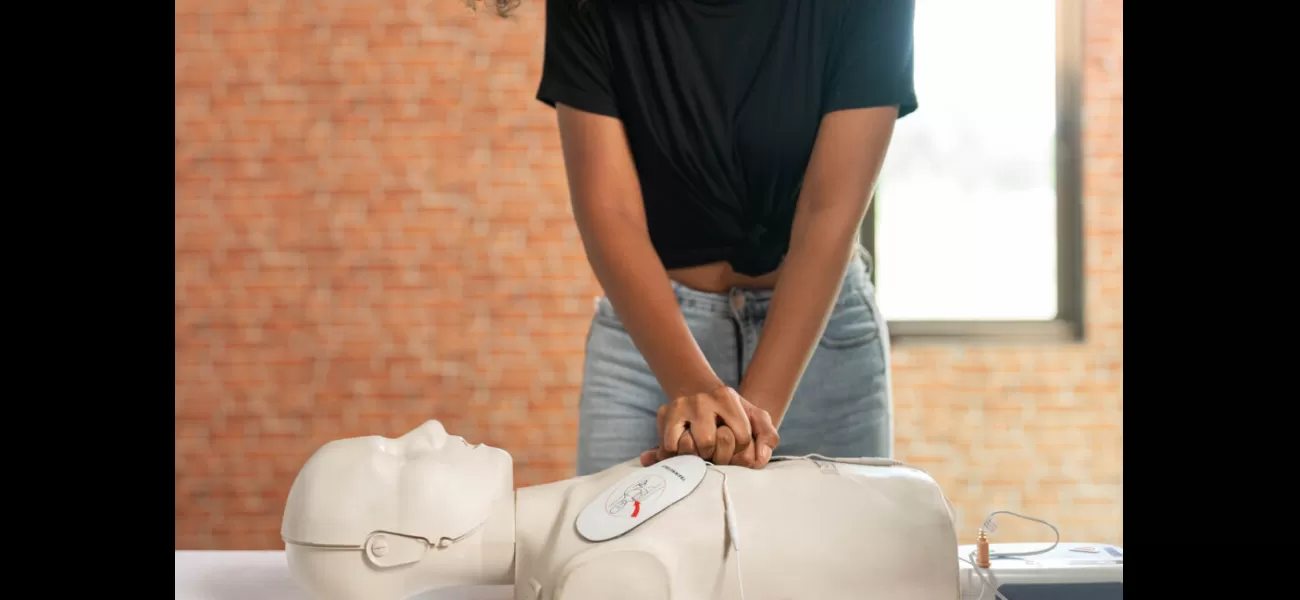Research shows that black individuals are less likely to survive after receiving CPR from a bystander.
Study shows white individuals have a higher chance of survival post-cardiac arrest if given CPR, compared to other races.
August 13th 2024.

A recent study funded by the National Institutes of Health has shed light on the importance of race and gender when it comes to survival rates after receiving bystander CPR. The findings, which were published in the American Heart Association journal Circulation, reveal that Black individuals and women have a lower chance of survival compared to their white counterparts when CPR is performed. The study utilized data from a large U.S. registry and analyzed over 623,300 nontraumatic out-of-hospital cardiac arrests that occurred between 2013 and 2022. The goal was to examine whether there is a connection between bystander CPR and survival outcomes based on the patient's sex, race, and ethnicity, as well as their neighborhood demographics.
The results were striking. It was discovered that white individuals were three times more likely to survive when bystander CPR was administered after experiencing cardiac arrest. Additionally, men from any background had twice the chance of survival compared to women. It's worth noting that in all cases, CPR was performed by someone who was not a first responder.
Dr. Paula Einhorn, a program officer at the National Heart, Lung, and Blood Institute, emphasized the importance of CPR in saving lives. However, she also acknowledged the concerning disparities revealed by this study, highlighting the need to understand how to ensure equal outcomes for all patients who require CPR. The hope is that these new insights will lead to improved survival rates for these specific groups.
According to the NIH, about 40% of adults who experienced cardiac arrest received CPR from a bystander who was not part of the emergency response team. This could be a family member, friend, or even a member of the public. The study found that individuals who received bystander CPR had a 28% higher chance of survival and were less likely to have serious brain injuries compared to those who did not receive CPR.
Dr. Paul Chan, the first author of the study and a cardiologist at Saint Luke's Mid-America Heart Institute in Kansas City, Missouri, highlighted the need for a more nuanced understanding of improving survival rates. He posed the question, "It's not just about whether bystander CPR was performed, but was it done properly for everyone so that all individuals, regardless of race, ethnicity, or sex, can benefit equally from it?" These findings suggest that a more comprehensive approach may be necessary to ensure that bystander CPR provides the same benefits to all patients.
In light of these findings, it's crucial for everyone to be aware of the importance of CPR and how to perform it correctly. A Tennessee mother recently shared her heartbreaking story after her 7-year-old daughter tragically passed away from cardiac arrest caused by popping balloons. This serves as a reminder of the critical role that bystander CPR can play in saving lives, but also highlights the need to ensure that it is accessible and effective for all individuals, regardless of their race, gender, or ethnicity.
The results were striking. It was discovered that white individuals were three times more likely to survive when bystander CPR was administered after experiencing cardiac arrest. Additionally, men from any background had twice the chance of survival compared to women. It's worth noting that in all cases, CPR was performed by someone who was not a first responder.
Dr. Paula Einhorn, a program officer at the National Heart, Lung, and Blood Institute, emphasized the importance of CPR in saving lives. However, she also acknowledged the concerning disparities revealed by this study, highlighting the need to understand how to ensure equal outcomes for all patients who require CPR. The hope is that these new insights will lead to improved survival rates for these specific groups.
According to the NIH, about 40% of adults who experienced cardiac arrest received CPR from a bystander who was not part of the emergency response team. This could be a family member, friend, or even a member of the public. The study found that individuals who received bystander CPR had a 28% higher chance of survival and were less likely to have serious brain injuries compared to those who did not receive CPR.
Dr. Paul Chan, the first author of the study and a cardiologist at Saint Luke's Mid-America Heart Institute in Kansas City, Missouri, highlighted the need for a more nuanced understanding of improving survival rates. He posed the question, "It's not just about whether bystander CPR was performed, but was it done properly for everyone so that all individuals, regardless of race, ethnicity, or sex, can benefit equally from it?" These findings suggest that a more comprehensive approach may be necessary to ensure that bystander CPR provides the same benefits to all patients.
In light of these findings, it's crucial for everyone to be aware of the importance of CPR and how to perform it correctly. A Tennessee mother recently shared her heartbreaking story after her 7-year-old daughter tragically passed away from cardiac arrest caused by popping balloons. This serves as a reminder of the critical role that bystander CPR can play in saving lives, but also highlights the need to ensure that it is accessible and effective for all individuals, regardless of their race, gender, or ethnicity.
[This article has been trending online recently and has been generated with AI. Your feed is customized.]
[Generative AI is experimental.]
0
0
Submit Comment





